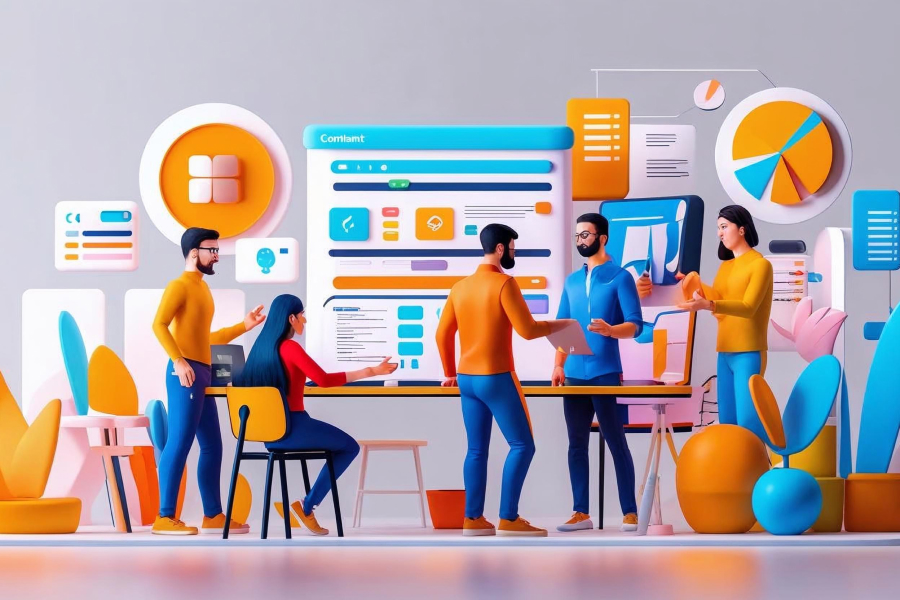The Hidden Costs of Staying Coupled: Why Enterprise Brands Are Going Headless
3 min read ● Silk Team
In today’s fast-changing digital landscape, enterprise brands face rising pressure to deliver fast, seamless, and personalized experiences across every channel and device. For years, many companies have relied on traditional, all-in-one CMS platforms that combine the front-end design with back-end content management. But as digital demands grow, these integrated systems often reveal hidden costs—slowing down innovation, limiting scalability, and reducing performance.
That’s why more enterprise brands are making the shift to headless CMS. This future-proof approach decouples content from presentation, empowering teams to scale, move faster, and create better digital experiences. Below, we’ll break down the hidden costs of traditional CMS platforms—and explain why going headless is now a strategic must.
What Is a Headless CMS?
A headless CMS separates the content management backend from the frontend display. Instead of locking content into one format or framework, it uses APIs to deliver content anywhere—from websites and apps to IoT devices, kiosks, or voice assistants. This decoupled setup gives businesses more control over how and where their content appears, unlocking a new level of flexibility and responsiveness.
The Hidden Costs of a Coupled CMS
1. Limited Flexibility Slows Innovation
Traditional CMS platforms lock developers into predefined templates and frontend structures, making it harder to customize or innovate.
- Slower rollout of new features: Developers are limited by the system’s framework and have less freedom to experiment.
- Vendor lock-in: Customizing the frontend often requires expertise in the specific CMS, increasing dependency on one vendor or toolset.
2. Omnichannel Delivery Becomes a Headache
Reaching customers across websites, apps, kiosks, and other touchpoints is tough when content is tied to one channel.
- Manual workarounds: Teams often need to recreate or adapt content manually for each platform.
- Inconsistent branding: Without centralized delivery, maintaining brand consistency across all digital experiences is difficult.
3. Performance Takes a Hit
Monolithic CMS systems serve both the content and the frontend from the same platform, often leading to slow page loads and bottlenecks.
- Laggy user experiences: Combined rendering increases load times, which can hurt engagement and SEO.
- Scaling challenges: High-traffic events can overwhelm a coupled system, causing slowdowns or even outages.
4. Scaling Is Complex and Costly
As brands grow, traditional CMS platforms can’t always keep up—especially during seasonal peaks or rapid expansion.
- High infrastructure costs: Scaling a monolithic system often requires significant investments in servers and licenses.
- Disruptive deployments: Updates or new rollouts can result in downtime or difficult migrations.
5. Increased Security Risks
Hosting everything—content, frontend, user data—on one system increases the potential attack surface.
- More vulnerabilities: A breach in one part of the system can compromise the whole stack.
- Harder compliance: Managing privacy and data regulations across regions becomes more complex with an integrated setup.
Why Enterprise Brands Are Going Headless
Shifting to a headless CMS solves these challenges head-on. It enables brands to deliver fast, flexible, and secure digital experiences—while keeping up with the pace of innovation.
1. Flexibility That Drives Agility
Headless architecture frees up development teams to build with whatever tools work best.
- Choose modern frameworks like React, Vue, or Angular
- Tailor the experience for every device or platform
- Integrate easily with APIs, third-party tools, and microservices
This flexibility allows brands to move faster, adapt quicker, and deliver standout experiences that set them apart.
2. Omnichannel Delivery, Made Easy
A headless CMS acts as a central content hub—sending content to every touchpoint via API.
- Deliver consistent messaging everywhere—from web to mobile to smart devices
- Launch new channels quickly without starting from scratch
- Streamline workflows and reduce repetitive work for content teams
With headless, brands can meet customers wherever they are—with content that’s relevant, timely, and on-brand.
3. Performance That Scales
Separating content from presentation allows for faster load times, better responsiveness, and more efficient scaling.
- Use static site generators or client-side rendering for lightning-fast speed
- Lower server load and improve reliability during high traffic
- Boost SEO with faster page speeds and better crawlability
Final Thoughts
The old ways of managing content simply can’t keep up with today’s digital demands. For enterprise brands, the shift to a headless CMS isn’t just a trend—it’s a strategic evolution. By ditching the hidden costs of legacy systems, companies can unlock speed, flexibility, and scalability that fuel long-term growth.
Brands that want to stay competitive, agile, and customer-focused are making the move now—before their current systems hold them back.

